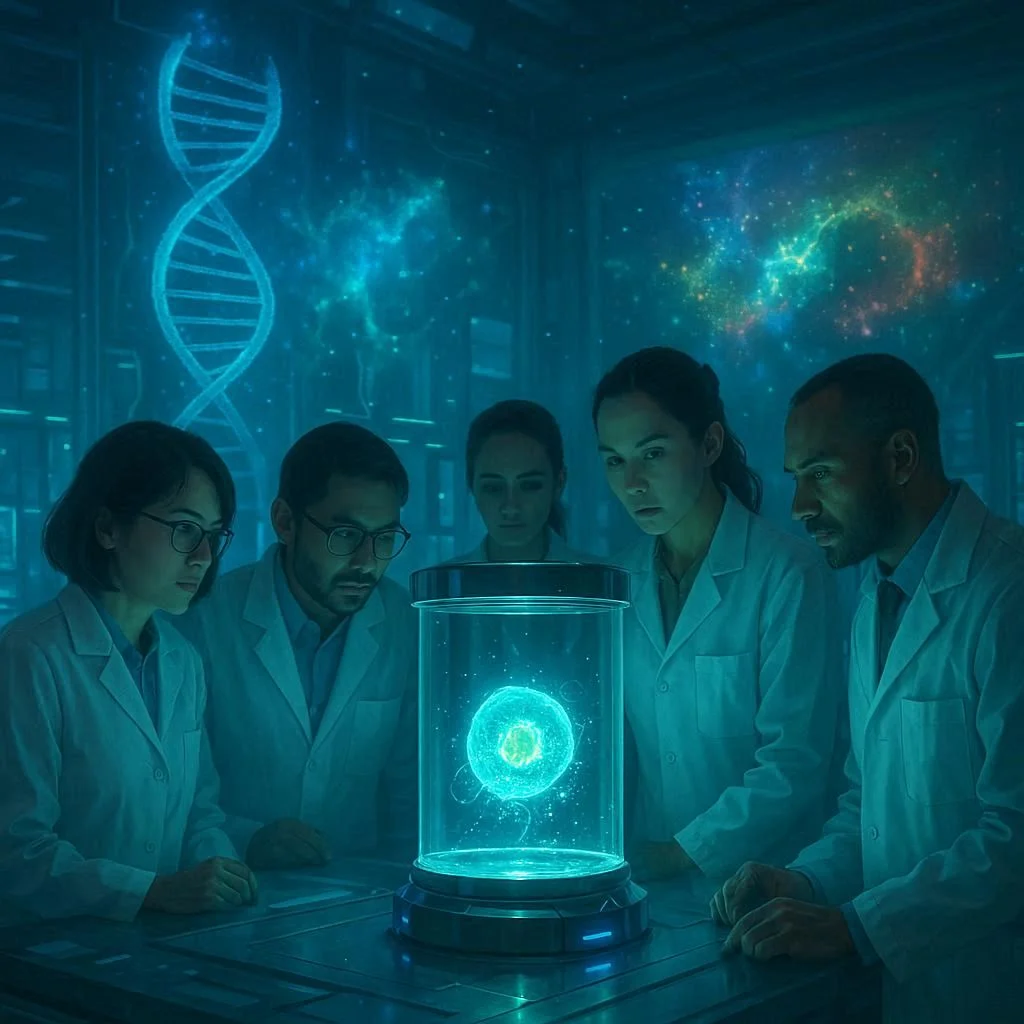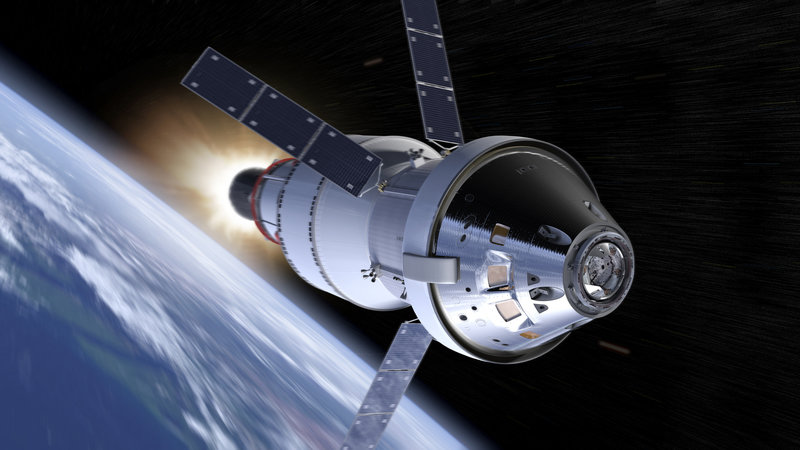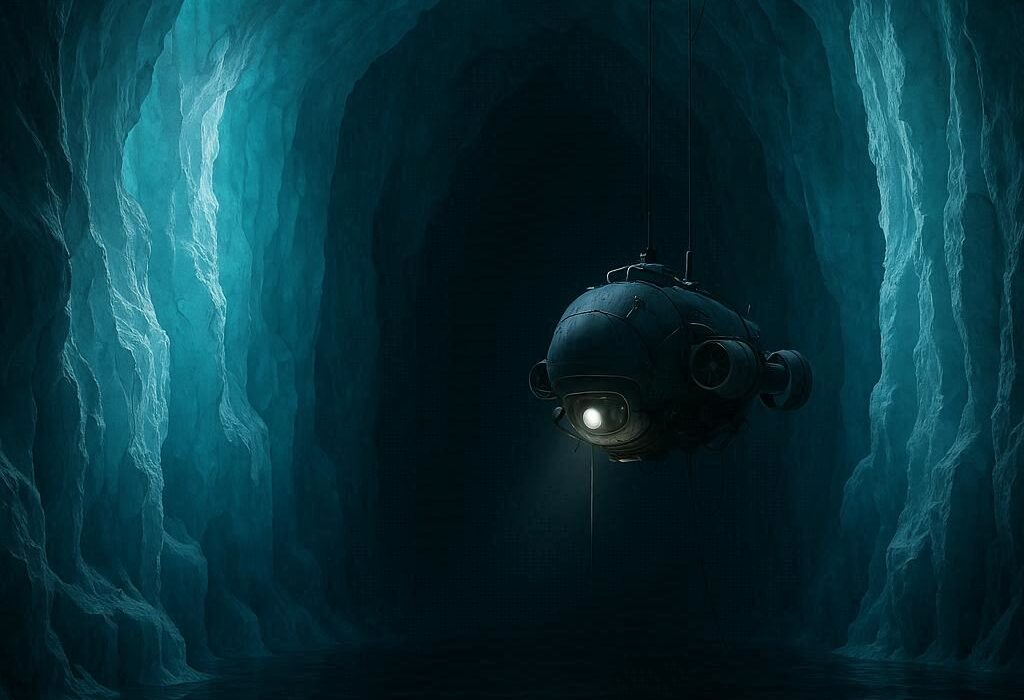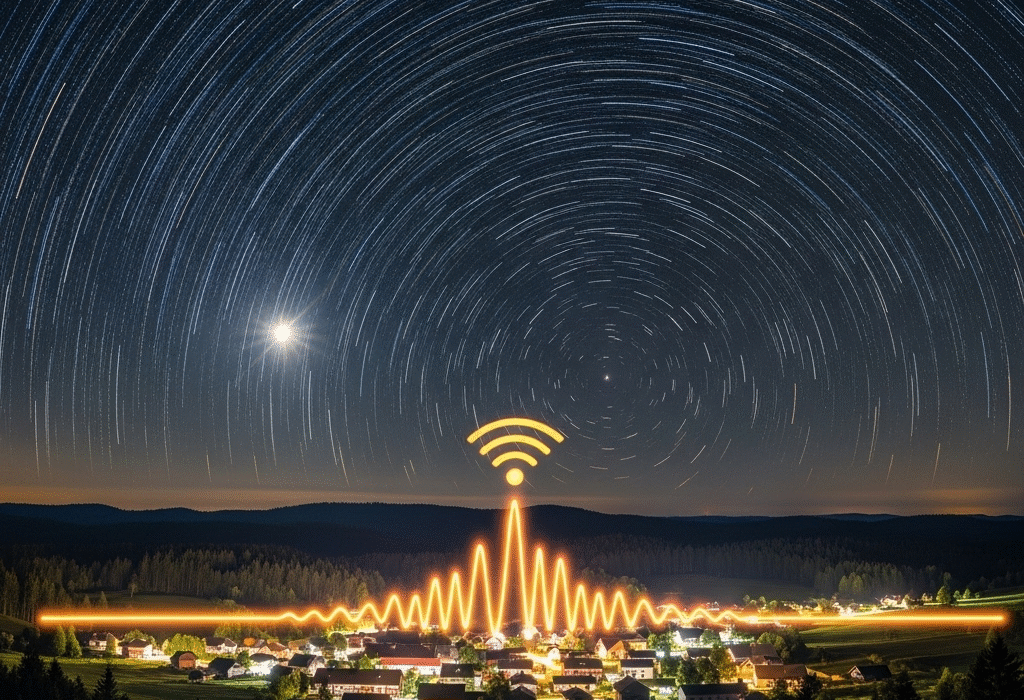There is perhaps no question more haunting, more dazzling, more profoundly unsettling than this: Where did life come from? From the earliest myths whispered around fires to the deepest scientific investigations of the twenty-first century, this mystery has lingered in our collective imagination. And now, for the first time in human history, we find ourselves on the edge of something extraordinary. We are not merely asking how life began—we are daring to ask whether we can create it ourselves.
To conjure life from nonlife is not simply to perform an experiment; it is to reach into the very heart of existence and reweave the fabric of what it means to be alive. It is a dream both exhilarating and terrifying, filled with promises of medical revolutions and fears of unintended consequences. The laboratory, once a place of quiet measurements and careful observation, has become a crucible where the possibility of artificial life glows like molten fire.
But what does it mean to “create life from scratch”? And could such a feat ever truly be achieved? To explore this question is to walk along a boundary between science and philosophy, between the known and the unknown, between awe and anxiety.
The Mystery of Life’s Origins
Before we can attempt to create life, we must first confront the enigma of how it arose naturally. Life on Earth began around 3.5 to 4 billion years ago, in a world utterly alien to us. Volcanoes belched fire, seas boiled with chemical soups, and lightning tore across skies thick with gases. Somewhere in this chaos, chemistry made the leap into biology. Molecules that had once been simple and lifeless began to assemble into patterns capable of self-replication and evolution.
This transition—from nonliving matter to living systems—is called abiogenesis, and despite decades of study, it remains one of the deepest scientific mysteries. We know that amino acids, the building blocks of proteins, can form naturally under certain conditions. We know that nucleotides, the raw material of DNA and RNA, can arise from simpler chemicals. We know that lipids can self-assemble into spheres resembling primitive cell membranes. But knowing the ingredients is not the same as baking the cake.
How did these components come together in just the right way to produce something that could copy itself, evolve, and ultimately give rise to the teeming biosphere we see today? The answer remains elusive, and yet it is within this uncertainty that science has found a new, daring path: if we cannot yet explain how life emerged, perhaps we can recreate it in the lab.
What Counts as “Life”?
Before the experiment begins, we must wrestle with a deceptively simple question: what is life? Defining it is harder than it seems. We might say life reproduces, evolves, consumes energy, responds to its environment, and maintains internal order. Yet there are exceptions to every rule. Viruses, for example, cannot reproduce without hijacking a host, yet they evolve with breathtaking speed. Fire consumes energy and spreads, but no one calls fire alive.
If we are to “create life from scratch,” we must decide what threshold marks the beginning. Does a simple self-replicating molecule count as life? Or must it be a cell, with DNA, metabolism, and the ability to evolve? The answer shapes the entire pursuit. Scientists often speak of “minimal life”—the simplest possible system that could still be called living. The search for minimal life is not only an attempt to build biology’s foundation, but also a profound meditation on existence itself.
The Birth of Synthetic Biology
The dream of building life from scratch has given rise to a new scientific frontier: synthetic biology. This field does not merely tinker with existing organisms; it seeks to design and construct entirely new biological systems. Imagine biology as a vast symphony. For centuries, humans have learned to play the notes nature has given us—breeding plants, domesticating animals, modifying microbes. But now, with synthetic biology, we are learning to compose our own melodies.
Some of the pioneers of this field are attempting to create new forms of DNA, expanding the genetic code beyond the familiar four letters—A, T, C, and G. Others are building minimal genomes, stripping down organisms to the bare essentials to discover how little DNA is needed for life to persist. Still others are constructing protocells—artificial bubbles of molecules designed to mimic the behavior of the first primitive cells on Earth.
This is not science fiction. In 2010, a team led by Craig Venter created the first organism with a synthetic genome. They built DNA in the lab, inserted it into a bacterial cell, and watched as it sprang to life, carrying out the functions of a living organism. It was not life conjured from pure chemicals, but it was a step—a profound step—toward the creation of artificial life.
The Challenge of Building from Scratch
Yet creating life entirely from nonliving matter remains a staggering challenge. Life is not just DNA—it is metabolism, structure, information, and adaptability, all interwoven in dizzying complexity. To recreate this from raw chemicals is like trying to build a cathedral from grains of sand while blindfolded.
One of the central hurdles is self-replication. A molecule that makes copies of itself must do so accurately enough to preserve its identity, yet flexibly enough to allow variation and evolution. RNA, a cousin of DNA, is a promising candidate. It can both store information and perform chemical reactions. Many scientists believe RNA played a starring role in life’s origins, in what is called the RNA world hypothesis. If we could design a self-replicating RNA system in the lab, we might be looking at the first spark of artificial life.
Another challenge is creating a boundary—a cell membrane. Without some form of enclosure, life’s fragile chemistry diffuses into chaos. Lipids naturally form spherical membranes, but building a protocell that can grow, divide, and evolve is an immense undertaking. Yet progress is being made. Scientists have created lipid vesicles that encapsulate RNA, allowing tiny experimental systems that resemble primitive cells. These are not alive—not yet—but they point the way forward.
Playing God or Understanding Nature?
The idea of creating life from scratch stirs emotions as powerful as the science itself. For some, it is exhilarating—the chance to glimpse the very machinery of existence, to understand not only how life began on Earth but how it might arise elsewhere in the cosmos. For others, it is unsettling. Are we “playing God”? Are we trespassing into realms best left untouched?
The phrase “playing God” echoes with fear, but perhaps it is misleading. Science is not about usurping divinity; it is about seeking understanding. To create life in a lab would not diminish the miracle of existence—it would deepen it. Imagine the awe of holding in your hands a droplet of molecules that, for the first time in history, has crossed the threshold from nonlife to life under human guidance. It would not be hubris but humility, a recognition of our place as part of a universe capable of knowing itself.
And yet, the ethical questions are real. What responsibilities come with creating new life forms? Could artificial organisms escape the lab, spreading unpredictably into the world? Could the technology be misused, engineered for harm rather than healing? As with all powerful knowledge, the challenge is not only scientific but moral.
The Promise of Artificial Life
If we succeed in creating life from scratch, the implications are staggering. Medicine could be revolutionized. Imagine designing cells that seek out and destroy tumors, or organisms that manufacture lifesaving drugs within the body. Imagine microbes engineered to clean oceans of plastic or to capture carbon from the atmosphere, helping to heal the planet we have scarred.
Artificial life could also expand our understanding of the cosmos. If life can be created in a laboratory, it would suggest that life is not a cosmic accident but a natural outcome of chemistry under the right conditions. This would strengthen the possibility that life exists elsewhere in the universe—perhaps on Mars, beneath the ice of Europa, or in the methane lakes of Titan.
In this sense, to create life on Earth would be to glimpse the possibility of life everywhere, to realize we are not alone but part of a broader cosmic story.
The Fear of the Unknown
And yet, with every promise comes fear. Life is powerful precisely because it evolves. A system capable of self-replication can, given time, change in ways we cannot predict. The risk of an artificial organism evolving beyond our control is small, but it is not zero. Even a harmless microbe, once released, could disrupt ecosystems in unexpected ways.
The fear is not irrational. History has shown that human inventions often carry unforeseen consequences. Fire warmed our homes but also burned our cities. Nuclear fission powered our grids but also destroyed Hiroshima. Artificial life, if achieved, would be one of the most consequential creations in human history. The responsibility would be immense.
This is why scientists working in this field emphasize caution, regulation, and transparency. The pursuit of artificial life is not a secretive alchemy but a global endeavor, debated openly in scientific journals and conferences. The risks are real, but so too are the opportunities for wisdom.
The Poetry of the Possible
To imagine creating life from scratch is to imagine standing at the threshold of a new era. It is to envision a future in which biology is not only observed but designed, in which humanity becomes both student and sculptor of life itself.
And yet, even if we never fully succeed, the pursuit itself is transformative. Every experiment, every failed attempt to coax chemistry into biology, deepens our understanding of what life is. Each protocell constructed, each self-replicating molecule designed, each artificial genome assembled is a verse in a growing poem about existence.
Perhaps the true beauty of this quest is not whether we can succeed, but what we discover along the way. In attempting to build life, we come face to face with its fragility, its resilience, and its grandeur. We begin to see that life is not a fixed state but a process, a constant negotiation between order and chaos, structure and flux.
The Future of the Dream
So, could we create life from scratch in a lab? The honest answer is: not yet. We can build pieces of the puzzle, assemble fragments that hint at life’s spark, but the full leap remains just beyond our grasp. And yet, the gap narrows year by year.
Perhaps in a decade, a team will announce the creation of a protocell that grows, divides, and evolves entirely from nonliving molecules. Perhaps in a century, synthetic life will be common, woven into medicine, agriculture, and environmental care. Or perhaps we will discover that life is more elusive, more mysterious, than we ever imagined.
What is certain is that the journey itself will change us. It will challenge our ideas of what is natural, what is possible, what is sacred. It will force us to confront our fears and embrace our responsibilities. It will deepen our awe for the universe that gave rise to both us and our questions.
Conclusion: The Fire We Hold
To create life from scratch is not just a scientific endeavor—it is a human one. It is born from curiosity, sustained by imagination, and tempered by caution. It is the attempt to answer the oldest question of all, not by looking only to the past but by daring to shape the future.
We may succeed, or we may fail. But in the attempt, we glimpse something profound: life is not a static miracle but a dynamic possibility, woven into the very chemistry of the universe. To hold that possibility in our hands, even for a moment, would be to touch the fire that has burned since the first spark of existence.
And so we ask, with both trembling and wonder: could we create life from scratch in a lab? Perhaps not today, perhaps not tomorrow—but the pursuit itself is a testament to what we are. We are beings who question, who dream, who seek to understand not only the world we inherit but the worlds we might yet bring into being.






